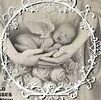Many expectant parents are confused about what kinds of clothes their newborns will need. The good news is, baby clothes are relatively simple, and the basics should last for a long time. Whether you’re buying new or second-hand, consider buying some organic cotton clothing for your baby. Conventional cotton uses a large amount of potentially harmful chemicals in production. Organic cotton, on the other hand, is grown without the use of any synthetic pesticides or fertilizers.
Babies grow fast, so you’ll likely need to buy a few sets of clothes in each size. Some experts recommend purchasing a minimum of 15 pieces of each size, including bodysuits, gowns, pants, socks and shoes. It’s also a good idea to have some warm outer clothing on hand, such as sweaters or ponchos.
Baby clothes are usually made from soft, stretchy fabrics that are comfortable against baby’s sensitive skin. In general, cotton is a good choice because it’s naturally cool and absorbent and washes well. Cotton is also better for the environment than synthetic fabric, which can be rough on infants’ delicate skin and often cause rashes.
While it’s tempting to get every little thing you can think of, the truth is, you won’t wear most of the items in your baby’s wardrobe more than once or twice. Baby clothes are often designed for quick dressing and undressing, which makes them easy for you and baby. For example, a onesie that snaps across the front is ideal for babies, as it doesn’t require pulling over the head and can be easier on the sensitive umbilical cord stump and milk tummy. Other options include long-sleeve kimono style shirts that layer over the belly and fasten at the side (similar to an open dress).
In addition to onesies and rompers, consider getting some shorts, bloomers or pants in the 000 size. These bottoms will help to keep baby warm and cover the nappy for diaper changes. In warmer weather, you can pair these with a shirt or bodysuit.
Having some socks in your baby’s wardrobe is also helpful, as their feet are often colder than ours, Smith says. A pair of soft skull caps or hats will also keep your baby warm—babies lose a lot of heat through their heads and can easily get chilly in the early weeks. Finally, a pair of booties or slippers will keep your baby’s feet warm.
A bib is an absolute necessity for mealtime. Look for a bib that can be positioned comfortably around baby’s neck and has adjustable fastenings to ensure a secure fit.
For special occasions, you can also pick up a few dressy tops and dresses for your baby. These outfits will be handy for photos and meeting family and friends.
